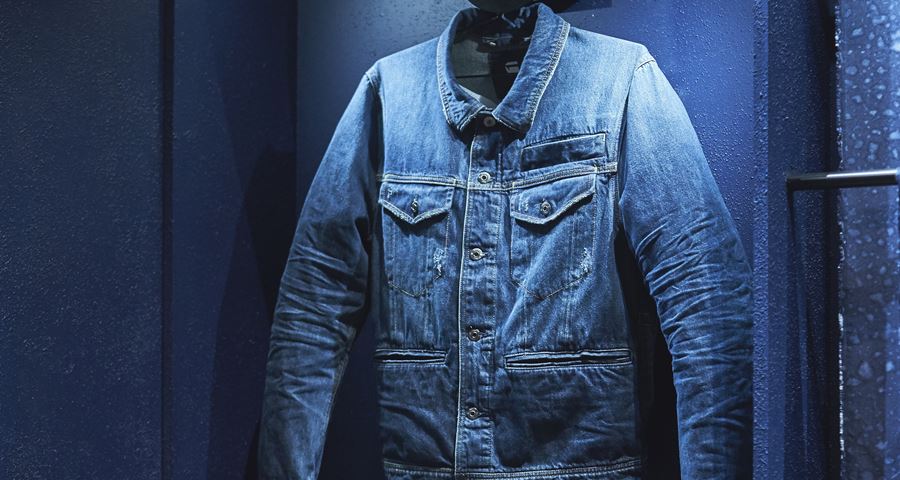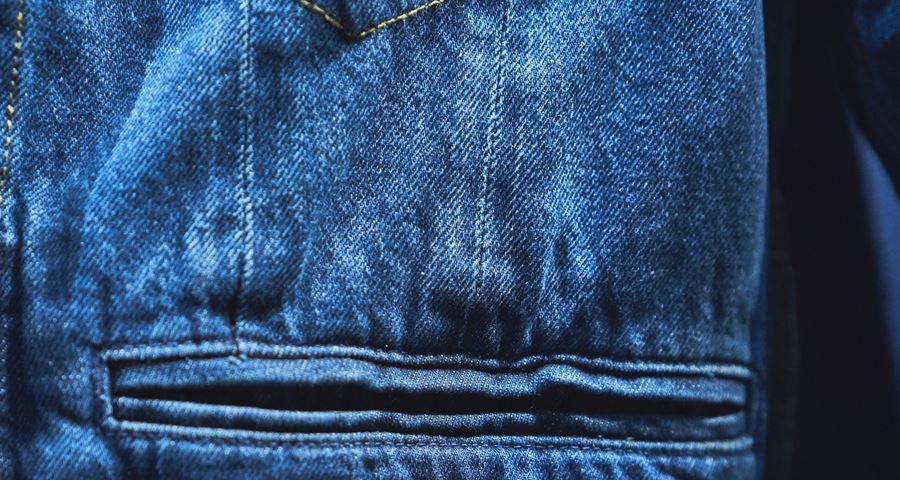Beazley Designs of the Year
Q&A with G-Star RAW
The Design Museum speaks to Adriana Galijasevic, sustainability and denim expert at G-Star RAW about their "most sustainable jeans ever" - featured in the Beazley Designs of the Year 2018 exhibition.

Q:Congratulations on being nominated for this year’s Beazley Designs of the Year, what does it mean to you to be put up for this award?
Thank you very much! We are ecstatic and honoured that G-Star RAW’s Elwood RFTPi jeans and the D-Staq RFTPi jacket have been nominated for this esteemed award whose criteria are good, innovative design and game changing practices.
Q: The G-Star Elwood RFTPi are the “most sustainable jeans ever”. Can you describe the manufacturing process that makes this statement possible? And how does this compare to the environmental impact of traditional denim production?
Considering that the largest percentage of a pair of jeans is made from denim fabric, as a starting point we focused on designing and making the world’s most sustainable denim fabric. To make this happen we partnered with DyStar and Artistic Milliners in 2016. This fabric features organic cotton grown without synthetic fertilisers and pesticides and world’s cleanest indigo technology which uses 15% less indigo, 70% less chemicals, requires no hydrosulphite and produces no salt by-product during the reduction and dyeing process, consequently saving water and leaving a clean and recyclable water effluent. To validate our assumptions that we indeed have designed the most sustainable denim fabric and that we have formulated the cleanest indigo dyeing process, for us it was essential to go through the most rigorous certification process (Cradle to Cradle Certification™ -the only certification in the world designed for circular economy). The result was the World’s first Cradle to Cradle Certified ™ Gold Denim Fabric whose chemistry presents zero risk for people and planet.
In terms of wash and manufacturing of our products, we worked together with our long-standing partner Saitex to make and wash the garments with their utmost care for people and environment. By employing sustainable technologies such as laser and ozone, using no stones and no potassium permanganate, we were able to bring our water consumption to 10 litres of water per garment. 98% of that water is recycled and re-used and the other 2% evaporates, leaving no water to be wasted or discharged into the local environment. In addition, our jeans are partially air dried via ceiling revolving system to save 85% energy.
When it comes to design, we made our jeans 98% recyclable by eliminating zippers and rivets. Instead of zippers, we used eco-finished metal buttons which we created in collaboration with YKK without any electroplating, thus containing no toxic chemicals and saving 89% of water. Instead of using poly cotton pocketing base, we used organic cotton. Instead of leather labels we used cellulose based yakron labels which are FSC (Forest Stewardship Council). Instead of polyester care labels we used recycled polyester. Our carton packaging and hang tags are also responsibly sourced (FSC based).
Going beyond design and manufacturing of the product, when it comes to customer use and customer impact, we added a Clevercare® tag to the care label in the garments and on our web-shop to educate our customers how to care for their garments because vast water and energy impact happens at the user stage. We also added online tips on how to prolong the life of their garment as well as how to responsibly part from it.

Q: Have you seen a demand from your customers for more eco-friendly options?
Yes definitely, especially over the last two years customer interest and awareness have been on the rise. Knowing where and how something is made has become more and more integrated into everyone’s lifestyle. Since 2014, our customers can find out via our web-shop where each product they are interested in was manufactured by clicking on ‘Where is it made?’ icon. Furthermore, they can also identify our most experimental and the most innovative sustainable practices by Raw For The Planet markings.
Q: You have made your new material open source so that other designers can use it, what drove this decision and what barriers can you see for others following in your footsteps?
We as one brand alone cannot change the entire denim industry. This is why, when we developed the world’s first Cradle to Cradle Gold Certified™ Denim Fabric, we made an open access to the actual fabric to other brands via the Fashion Positive Library of the Cradle to Cradle Products Innovation Institute. This also allowed us to share the revolutionary hydrosulphite free indigo technology, we introduced during the make of this fabric, with other mills so they can adapt positive dyeing practices in their own productions. When it comes to sustainable innovations, alone they are not enough. To have a positive impact-education, collaboration, adaptation, scaling and acceleration are imperative. We hope others will join us in this movement towards clean fashion industry.
Q: Do you think that more fashion brands are considering sustainability in their practices and in your opinion, what are the biggest challenges that the fashion industry faces in responsible manufacturing?
According to the Business of Fashion & McKinsey & Company ‘The State of Fashion 2018’ report 42 out of 100 brands are transparent about their supplier information. I still think this percentage is low. Fashion industry is a global complex system involving numerous players across the supply chain. Considering the same, it has numerous challenges. Luckily, over the past decade and especially over the last five years, we have seen a rise in the awareness by the entire chain regarding the environmental and social issues we are collectively facing. Sustainable innovation, technology and circularity have been playing a crucial role in evolving our industry in the positive direction. However, all these tools alone are not enough. There is a need for systemic change where these tools are adapted and implemented in order for the industry to scale and accelerate the change for good.
Q: You have managed to produce jeans that are 98% recyclable which is incredible. Could this become 100% in the future?
It is possible even now, but this jean is then mostly mono-fibre based with detachable trims, garment labelling that may not comply to the rules and regulations and cellulose based threads. The only thing is that this often has limitations when it comes to aesthetic, function and durability. Looking at the market, tri-fibre blends which offer stretch with good recovery and even shaping body properties are dominating. Such fabric constructions, are very complex to recycle because it is very difficult to separate and re-use multiple fibre components. Some chemical recycling technologies are out there, but they are still not optimised to handle the waste we currently have because this waste was never designed to be re-used in the first place. In short term, it is important to focus on accelerating the existing solutions and for the future to think according to Cradle to Cradle certified principles in order to design safe materials and products that can be continuously cycled.
Q: What’s the one thing you’d like people to remember about your designs when they leave the Beazley Designs of the Year exhibition?
For us it was possible to design great looking denim products whose chemistry presents zero risk for people and planet because of the design choices we made. Think about the choice and impact you may have next time you are purchasing, using and or discarding your products.
Q: And finally, if you had one piece of advice for a young fashion designer starting out, what would it be?
If you have not already, please read the book ‘Cradle to Cradle: Remaking The Way We Make Things’ because it will help you understand that waste is a design failure. It will also show you how nature does not produce any waste. Allowing yourself to mimic nature in your designs, will yield beautiful products which have a positive impact on people and planet. Who wouldn’t want that?
Related exhibition